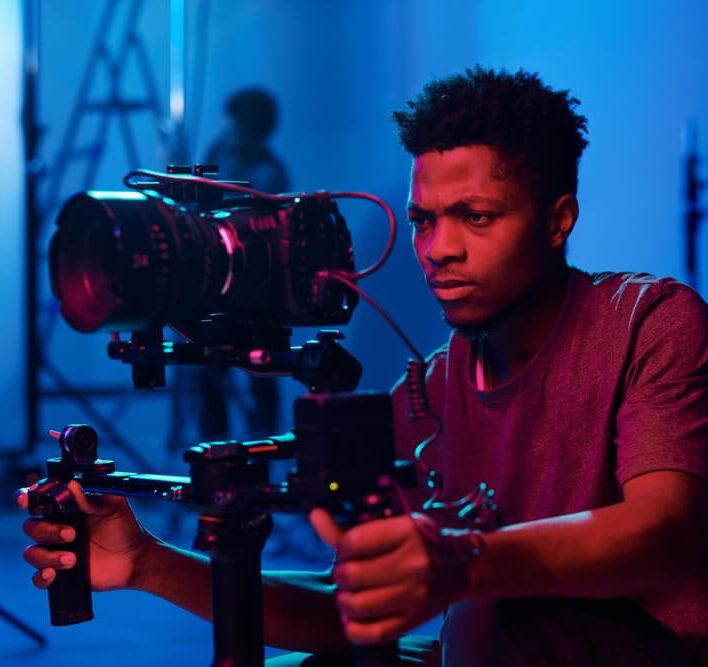The Shift to Digital: When Did Movies Start Being Filmed Digitally?

The world of cinema has undergone a massive transformation in the last few decades. From the unmistakable rattle of film reels in the projection room to the silent efficiency of digital screens, the journey has been nothing short of revolutionary. Today, most people experience films through high-definition streaming or digital cinema, but this was not always the case.
For over a century, movies were created using physical film stock. However, the question many film enthusiasts ask is: when did movies start being filmed digitally? The answer lies in a blend of technological innovation, cost-effectiveness, and the need for modernized workflows in filmmaking.
Early Cinematic Tools and Their Limitations
In the early days, film was the gold standard. Directors and cinematographers loved the texture, depth, and color richness of 35mm and 70mm film. Yet, it wasn’t without challenges. Film was expensive to buy and process, fragile to handle, and limited in editing flexibility.
Post-production workflows were tedious, involving cutting and splicing actual reels. Distribution also meant physically shipping bulky film canisters to theaters worldwide. With growing demands for faster production and more efficient delivery, the limitations of analog film began to show.
Digital Pioneers: The First Steps
The shift began subtly in the late 1980s and gained traction in the 1990s. The first full-length feature film to be shot and distributed digitally was “Star Wars: Episode II – Attack of the Clones” (2002), captured entirely on high-definition digital cameras.
While digital cameras existed earlier, they lacked the quality filmmakers expected. But as resolutions improved and storage technology advanced, digital began to rival film. One standout innovation was the Sony HDW-F900 camera, co-developed with Lucasfilm. This camera changed the game by offering cinematic quality without traditional film stock.
“Digital doesn’t degrade the image—it degrades the barrier between imagination and realization.” – Anonymous filmmaker
This leap in tech led to faster shooting schedules, instant playback for directors, and cost reductions across the board.
The Mainstream Shift and Global Adoption
By the late 2000s, more filmmakers were adopting digital methods. Major studios, independent creators, and even documentaries were turning to digital for its ease and flexibility. The success of James Cameron’s “Avatar” (2009), shot with advanced 3D digital cameras, cemented the medium’s potential.
The turning point came when the industry realized that digital distribution was more efficient than traditional reels. Theaters began upgrading to digital projectors. Distributors saved money, and filmmakers had greater creative freedom.
Digital editing suites replaced cutting rooms, and color grading became more accessible and precise. Companies like Rezaid Film embraced this transition by providing innovative solutions to support digital workflows, helping both indie and commercial productions transition smoothly.
Why the Industry Embraced Digital
Today, digital technology dominates filmmaking. Here’s why the shift was widely accepted:
- Cost Efficiency: No need for film rolls, chemical processing, or physical storage
- Speed: Instant review of footage and real-time adjustments
- Editing Flexibility: Seamless integration with modern editing and VFX tools
- Global Reach: Easier international distribution and translation
This move wasn’t just technological—it was philosophical. It democratized filmmaking, allowing emerging voices and low-budget creators to produce cinematic-quality content.
The Current Digital Filmmaking Landscape
Now, 8K cameras, cloud-based editing platforms, and virtual production studios are the norm. Platforms like Netflix, Hulu, and Amazon Prime often demand digital formats for submission. This trend shows no signs of slowing.
Cinematographers now balance the flexibility of digital with the visual richness of traditional film. Some productions, like Christopher Nolan’s movies, still use IMAX film, but even they integrate digital elements in post.
Moreover, digital archiving ensures that films last longer and can be easily restored or remastered. The preservation of cinema history has never been more secure.
Educational Insights for New Filmmakers
Aspiring filmmakers must understand the significance of the digital transition:
- Learn Digital Cinematography: Understand camera sensors, codecs, and dynamic range
- Master Editing Tools: Familiarize yourself with Adobe Premiere, DaVinci Resolve, or Final Cut Pro
- Understand Digital Distribution: Know the formats and platforms for releasing content
- Stay Updated: The industry evolves rapidly; always follow the latest trends
These insights can empower creators to take full advantage of modern tools without compromising storytelling quality.
Conclusion
The journey from celluloid reels to digital pixels has forever changed the face of cinema. While traditional film had its charm and aesthetics, digital filmmaking has broken barriers, unlocked creativity, and expanded access to storytellers worldwide.
To answer the pressing question: when did movies start being filmed digitally—the evolution began in the late 1990s and became mainstream by the early 2000s. Today, it’s the foundation upon which the future of cinema is built.
By understanding this transition and embracing the tools it offers, filmmakers can create powerful, engaging, and impactful visual stories. The shift to digital is not just a technological revolution—it’s a storytelling renaissance.
- Information Technology
- Office Equipment and Supplies
- Cars and Trucks
- Persons
- Books and Authors
- Tutorials
- Art
- Causes
- Crafts
- Dance
- Drinks
- Film
- Fitness
- Food
- Jogos
- Gardening
- Health
- Início
- Literature
- Music
- Networking
- Outro
- Party
- Religion
- Shopping
- Sports
- Theater
- Wellness


